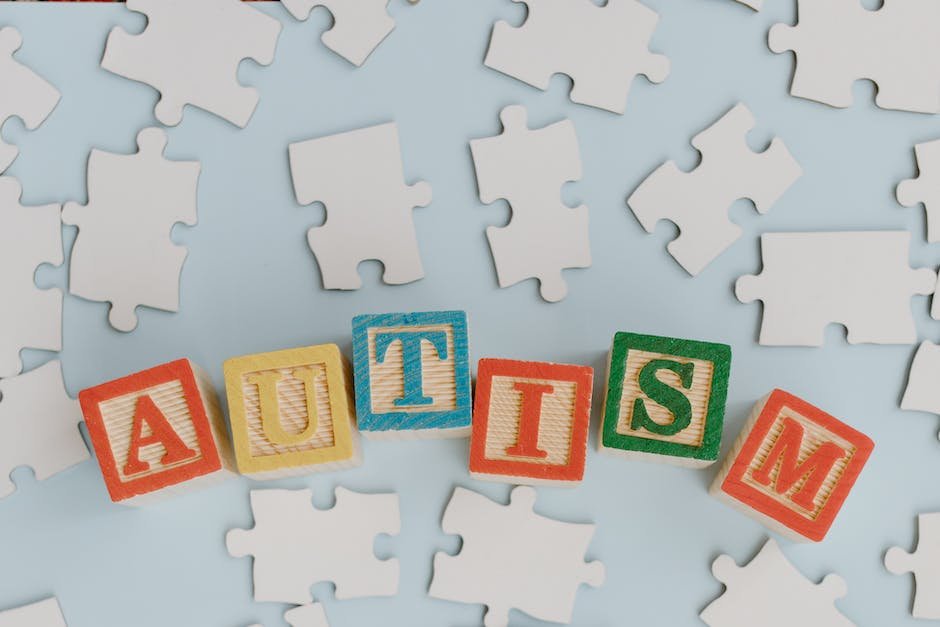
The myriad kaleidoscope of human emotion is a universal experience that connects us all, yet its expression and perception may vary widely across the diverse spectrum of humanity. For individuals diagnosed with autism, this emotional landscape often takes on a unique contour, distinct from the typical perceptions. Our understanding of autism’s complexity and subtlety has broadened over recent years, and current research posits a far more nuanced perspective than the historical stereotyping. The crux of our exploration delves into the emotional world of individuals with autism – from their experiences of emotion, their empathetic perspectives, to the coping strategies that assist in emotional self-regulation. As we embark on this evocative tour, one fundamental axiom serves as our compass. There is no ‘one-size-fits-all’ narrative in autism, each person presents a unique profile as individualistic as their fingerprint.
Understanding Emotional Experiences in Autism
Uncovering the Spectrum: Decoding Unique Emotional Experiences of Individuals with Autism
As parents, understanding the unique ways our loved ones, particularly children with autism, experience emotions can make a huge difference. Navigating the spectrum of emotions might seem overwhelming, but it is a beautiful journey worth taking.
What’s challenging to note is that individuals with autism may not express or experience emotions in conventional ways. The familiar reactions or expressions we anticipate might not necessarily be a reflection of what they are feeling on the inside. This often makes parenting a child with autism a journey of constant learning.
One of the most unique things about how individuals with autism experience emotions is their heightened sensitivity. Some may have sensory processing differences, making their emotional responses to stimuli more intense than typically developing peers. For instance, sounds, tastes, and textures that may not bother most people can lead to emotional distress for someone with autism, manifesting as discomfort or even frustration.
Another unique aspect is their way of connection. Individuals with autism create and maintain emotional connections differently, often focusing on shared interests or comforting routines rather than direct emotional interaction. They may also show affection in atypical ways, which shouldn’t be mistaken for lack of bonding.
Overlapping emotions, also known as emotional cascade, is another characteristic seen in individuals with autism. This means they often experience more than one emotion simultaneously, sometimes causing overwhelming emotional reactions to situations we might consider small or negligible.
Those on the autism spectrum often have difficulty understanding and interpreting other people’s emotional cues, making it hard for them to respond appropriately. They might not pick up on subtle signs such as tone variation in voice, facial expressions, or body language. This, however, doesn’t mean they lack empathy. They often hold deep empathy; it’s simply expressed through a different language.
Unexpressed emotion is also common among individuals with autism. They often struggle to identify and express their feelings due to differences in emotional literacy, leading to stored emotions that can often burst out unexpectedly. This is a vital area to work on when nurturing a child with autism, teaching them to identify, express, and manage their feelings appropriately.
These are only a few insights into how uniquely individuals with autism experience their emotions. As parents, teachers, and caregivers, it’s essential to have a supportive environment which allows them to feel, express, and manage their emotions healthily. Let’s ensure our homes, classrooms, and communities adapt to their needs, offering a softer landing place for their hearts to express freely. Remember, every child is a different kind of flower, and from them, an entirely unique garden grows.

Empathy and Autism
Debunking the Myth: Autism and Empathy, Guiding Family Love and Support
Autism, a word that holds its own universe of living experience. A journey marked by a spectrum of emotions, profound understanding, and towering lessons. Often misconstrued, one of the prevailing myths surrounding Autism is the alleged lack of empathy. However, this is a misconception that is high time we debunk.
Distinct from being unempathetic, those with Autism may simply have different manners of empathizing, often obscured by how we’ve conventionally conceptualized empathy. A common challenge lies not in feeling empathy, but in how to decipher others’ emotions and appropriate ways to respond.
Social cues, facial expressions, and body language — the usual vehicles for communicating emotions, become puzzling riddles for individuals with Autism, leaving them struggling to decode the language of emotions. However, this doesn’t equate to a deficiency in empathy. Instead, they may need additional frameworks or guidelines to grasp these emotional nuances.
Moreover, let’s pay heed to their unique way of expressing empathy, which may not always follow the ‘traditional’ construct. For instance, they could sympathize greatly but portray it subtly, maybe through an affectionate gesture, a comforting thing, or meaningful activity. Sometimes, the empathy is there, waiting to be acknowledged in unconventional expressions.
Now, as family, what’s our role here? How can we bridge this gap and cultivate a nurturing environment for our autistic loved ones?
Patience is the cornerstone. Expecting immediate and typical empathetic responses might just set up for disappointment. Giving them the time they need to process their feelings is crucial and can shower amazing revelations of their depth of empathy.
Moreover, explicit communication goes a long way. A direct conversation about our feelings, rather than leaving them to decode unsaid words, can make it easier for them.
Remember, it’s not about teaching them ‘our’ ways of feeling and expressing empathy but understanding ‘their’ ways. Let’s build relationships around accepting and valuing their empathetic expressions, however different it may seem.
Don’t shy away from seeking help or using resources available. Many therapists and autism experts have specialized techniques and therapeutic strategies that can promote better emotional understanding for those on the spectrum. They can provide families with specific strategies to assist their loved ones in recognizing and responding to emotions better.
Last of all, let them know it’s perfectly okay not to get it right every time. It’s okay to take time to understand emotions. It’s okay to express feelings differently. After all, aren’t we all learning, stumbling, and growing in this journey of life and emotions?
In the end, love is the guiding compass. Their different way of empathizing doesn’t make them any less capable of loving or feeling. Let us, as families, open our arms, our minds, and our hearts to these beautiful different minds, honoring their unique ways of connecting emotion and embracing their empathy — diverse in expression, but equally profound. Because that’s what families do — we love, and we understand. Let our homes, hearts, and actions echo this message: Different, not less.

Emotional Regulation and Coping Skills in Autism
Empowering the Emotional Journey of Autism: Encouraging Strategies for Emotional Management
Navigating the emotional journey of autism can be a winding road, peppered with unique challenges and breathtaking triumphs. One key factor that can aid in the grooming of emotional management for individuals with autism involves effective strategies. These methods are not magic bullets, but rather, pieces of an ever-evolving puzzle that contribute to emotional growth, understanding, and resilience.
One impressive strategy is the incorporation of Structure and Consistency. Embodying these two factors in day-to-day routines brings comfort to individuals with autism. This stability provides a reliable and safe framework within which they can explore their emotions. Regularity gives them the space to experience changes in emotions while the predictability helps to alleviate anxiety.
Visual aids, like Social Stories and Emotional Thermometers, are another great resource. They provide a concrete and visual representation of various emotions and appropriate reactions. These tools can be customized to each individual’s unique sensory responses, making them an extremely effective method for individuals with autism to understand their feelings better.
Emotion-themed games or activities are another approach that merges structure with play-based learning. Integrating emotions into games or activities can help make the concept of emotions more concrete and fun, reducing the anxiety often associated with emotional literacy.
Implementing mindfulness and relaxation practices, especially bodily-based ones, can also be beneficial. Techniques such as deep breathing or yoga can aid in grounding and calming the body, thus managing emotions more effectively.
Role-playing can serve as a safe space to experiment with emotions and responses. In addition, it provides an opportunity to practice recognizing and responding to emotions in a controlled and supportive environment. Just remember to adapt the scenarios to align with their interests to keep them engaged and comfortable.
Literature, music, or videos that reflect emotional themes are wonderful tools to enhance emotional comprehension. They provide a platform to launch discussions about feelings, reactions, and how to handle certain scenarios, thereby increasing emotional understandings.
Finally, consider implementing Individualized Education Programs (IEPs) or Behavioral Intervention Plans (BIPs) that focus on social-emotional learning. These programs can be specially designed to meet the unique needs of the individual, providing specialized and structured support for their emotional growth journey.
Remember, Patience is pivotal. Every individual grows and learns at their own pace. There’s no ‘one size fits all’ in emotional management and definitely not with autism. As a parent, guardian, or teacher, the most memorable gift that can be bestowed upon them is your unwavering love, understanding, and dedication.
Let’s celebrate the extraordinary souls navigating this journey every day. Not just the milestones but also the moment-to-moment strides that inch them closer to understanding, expressing, and managing their emotions effectively.

The journey of understanding and supporting the emotional world of individuals with autism necessitates patience, sensitivity, and an open heart. It is these emotional tools that, when employed, can help to unveil the profound depth and distinct hue of emotions experienced by someone with autism. A well-selected variety of practical strategies and coping mechanisms can aid these unique individuals in navigating and articulating their emotional experiences, positively impacting their quality of life. The key to this endeavor lies in moving away from stereotypes and misconceptions, towards an empathetic understanding of their unique perspectives. By doing so, we as a society can become more equipped to celebrate our diverse tapestry of human experience and empathy, painting a more compassionate and understanding picture for individuals with autism.




